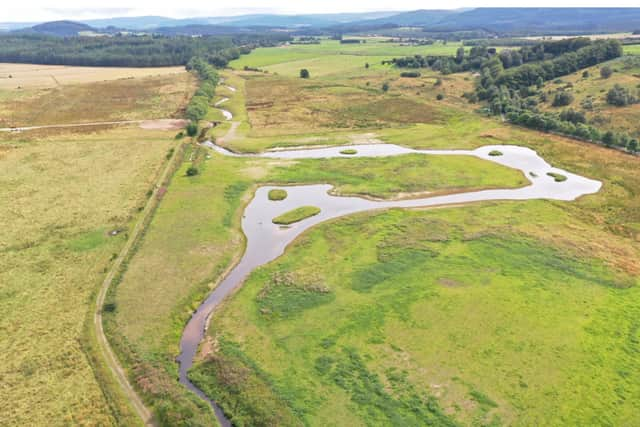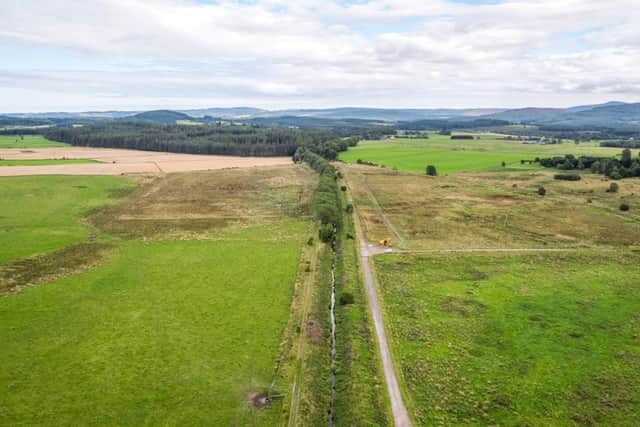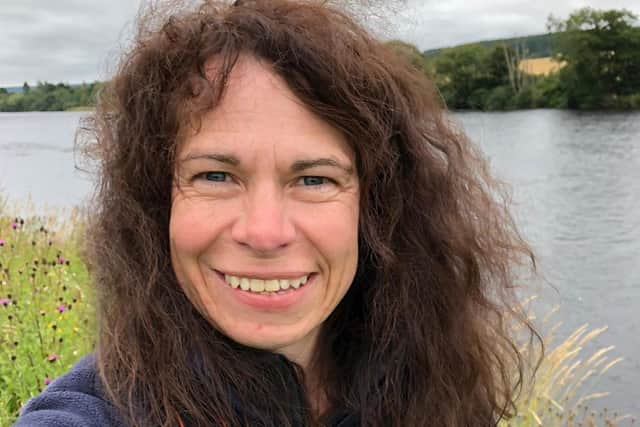River restoration brings back bends, boosts wildlife and scoops big award
The project saw natural bends and meanders brought back to a Deeside river that had been artificially straightened, native trees planted, wetlands recreated and salmon breeding grounds reconnected.
Beltie burn, near Torphin in Aberdeenshire, was first engineered in the mid-18th century for agricultural improvements and later to make way for the Deeside Railway line.
Advertisement
Hide AdAdvertisement
Hide AdRestoration of the river valley has transformed the middle reaches of what was a degraded agricultural stream into a rich complex of wetland habitats with the watercourse snaking through it on a more natural course.


The work has improved water quality, boosted local wildlife – including wild salmon – and increased the river catchment’s resilience against the impacts of climate change.
The kinks in the river course and wetland habitats typically create around 150 times more food for fish and other animals than straightened channels can provide.
Species including badgers, red kites, goosanders, goldeneye ducks, otters, dippers, kestrels, herons, kingfishers, cormorants and sea trout have all been spotted at the site since the work was carried out.
The £220,000 restoration work, carried out over a 13-week period last year, was managed by the Dee Catchment Partnership, working with the Dee District Salmon Fishery Board.


The team had to overcome some significant challenges to complete the groundwork, including difficulties posed by the Covid-19 pandemic and two major flooding events that occurred during the operations.
Now the site is being used to evaluate and demonstrate river valley restoration techniques for use elsewhere.
The innovative project has received high praise and scooped the Nature and Climate Action trophy at the recent Nature of Scotland Awards, which celebrate the people, projects, groups and organisations working to improve the country’s natural heritage and environment.
Advertisement
Hide AdAdvertisement
Hide Ad

Dee Catchment Partnership manager Dr Susan Cooksley led the three-month long restoration project with Dee District Salmon Fishery Board river operations manager Edwin Third.
She said: “We are over the moon to have won this fantastic award, exactly one year after the Easter Beltie restoration was completed.
“Our partnership exists to deliver collaborative projects that conserve the unique biodiversity and natural beauty of Deeside and build climate resilience across the catchment.
“This restoration has done exactly that – creating a new area of wild beauty and habitat for a rich diversity of wildlife, and slowing the flow of water which will help to ease flooding issues downstream.”
The awards are sponsored by wildlife charity RSPB in association with national agency NatureScot.
BBC presenter Dougie Vipond, one the Nature of Scotland judges, presented the prize.
He said: “The Nature and Climate Action Award recognises projects that tackle the twinned crises of biodiversity loss and climate change with nature-based solutions.
“All the finalists were of an incredibly high standard, but the Dee Catchment Partnership was the best example of a project that has taken clear, definitive steps to protect nature and adapt to climate change, and I’d like to congratulate them on this fantastic achievement.”
Advertisement
Hide AdAdvertisement
Hide AdBefore the work was carried out, Beltie burn was a typical agricultural stream.
Its 20km watercourse drained a catchment of around 80km2, entering the river Dee near Banchory.
But the burn had been extensively straightened and deepened over the past 250 years, resulting in poor quality and uniform instream habitats.
It had also become overwhelmed by silt and completely disconnected from its floodplain, which had lost its wetland characteristics.
This part of the burn created a break in connectivity of the whole river system – a problem clearly demonstrated by the fact that Atlantic salmon spawned in the burn’s lower and upper reaches, but not in the degraded middle section.
The Easter Beltie restoration project set out to return natural wetland habitats to the area, thereby restoring continuity to the river system.
As well as recreating natural meanders in the watercourse, the work has seen six new islands created and wetlands enhanced by shallow ponds, known as scrapes, for wading birds.
A long-term research project is being carried out by scientists at the James Hutton Institute to evaluate the ecological benefits.
Advertisement
Hide AdAdvertisement
Hide AdFilm-makers from rewilding group Scotland: The Big Picture have documented the transformation to help inform similar projects.
Future plans include proposals to create a new multi-use path and erect a hide for bird-watching.
There will also be improved community access through integration with a new cycle path.
Other measures include planting more native trees, creating wet grasslands to help stabilise river banks and utilising animals for grazing.
Francesca Osowska, chief executive of awards co-sponsor NatureScot, said: “COP 26 has highlighted the urgent need to tackle the twin crises of nature loss and climate change facing us all.
“Against that backdrop it has been even more heartening to see an incredibly high standard of entries for this year’s awards.”
A message from the Editor:
Thank you for reading this article. We’re more reliant on your support than ever as the shift in consumer habits brought about by coronavirus impacts our advertisers.
If you haven’t already, please consider supporting our trusted, fact-checked journalism by taking out a digital subscription.
Comments
Want to join the conversation? Please or to comment on this article.
